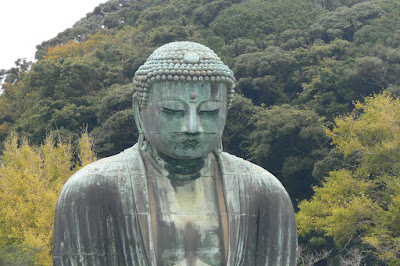Tea brief #4 : the diversity of tea between two poles
" At this time, the places where Cha-no-yu was most flourishing were Sakai in the East and Hakata in the West. The spirit of Sakai was esoteric and calm, that of Hakata dignified and magnificient. Rikyû and Sôkyû were typical of the East, Sôshitsu and Sôtan of the West. Of Hideyoshi it might be said that he was inclined to make the East his teacher and the West his friend. "
— A.L. Sadler, The Japanese Tea Ceremony
Based on what I could read, one can identify two " spiritual roots " to modern Tea. I use the term « root » here but these two practices are certainly not the only practices that inspired modern Tea. I see them rather as « poles » of the practice of tea. These two poles are : the wordly pole (or court pole) and the meditative pole. Are the two cities mentioned by A.L. Sadler (who is only quoting a text here but the reference is lacking) matching these two poles ? I cannot say for sure.
 |
| Tea Ceremony by Chikanobu Toyohara (1838-1912) |
Way before Rikyu was even born, there used to be worldly meetings, up until the end of the 16th century at least, during which aristocrates would contest on guessing where the matcha came from and exhibit their most beautiful pieces. These meetings were the occasion to gather a lot of people from the upper warrior classe (the « aristocrats of the time » per se) and the tea itself was very often prepared in the kitchens. Nevertheless, there were ritualized proceedings in the way to serve the tea. Also, the taste for Chinese and fancy pieces along with the desire to entertain during these events are things that we commonly find in modern practices and they certainly relate to these court practices of old times.
 |
| Daibutsu, Kamakura |
But parallel to that, there used to be a monastic tradition of tea too which consisted in drinking matcha to stay awake and alert during meditations. Tea was a « drug » for meditation in Zen and Pure Land buddhist temples. Here, one can mention that tea ceremonies were mainly supposed to be silent at first (though it is rarely the case today) and one had to adopt a meditative attitude during the event. Tea could also bring satori (the enlightenment) that is related to Zen.
Most of what is written about Tea insist mainly on this meditative aspect of Tea (and especially the Zen part). From what is told, the great masters of old times were highly critical of tea people that got interested in the merchant value of goods and in fame. The great masters preferred wabi (rustic) items to fine porcelain and they showed a certain frugality.
Nevertheless, next to this official speech and considering what this speech itslef criticize, it is clear that de facto, the tea room was not just the temple’s annex. Tea is also a place for the mans of the world. It even used to be a place to talk about politics in secret !
As far as my knowledge goes, I think that both these two practices, social and meditative, are at the root of today tea ceremony. There might be other roots though. But, very often, the difference between various tea practices stems from these two poles (pleasure of the meeting/trying to achieve social status or having a spiritual appreciation of art/intensity of the meditative moment).
My personal practice is mostly related to meditation although I am obviously a little bit too fond of tea goods. The meditation part gives an incredible intensity to the event that I like. But I know that it can be intimidating to some people and that it is a rather unusual kind of « fun ». Meanwhile the worldly side gives a more relax approach to tea and allow for more non-practionners to discover the Way of tea. Both poles should be respect equally in my opinion and my practice is just closer to one pole than to another.
A more complete presentation of the Tea Ceremony can be found here.
A more complete presentation of the Tea Ceremony can be found here.



Comments
Post a Comment